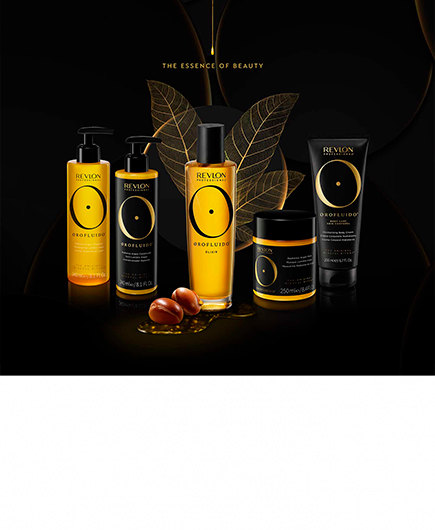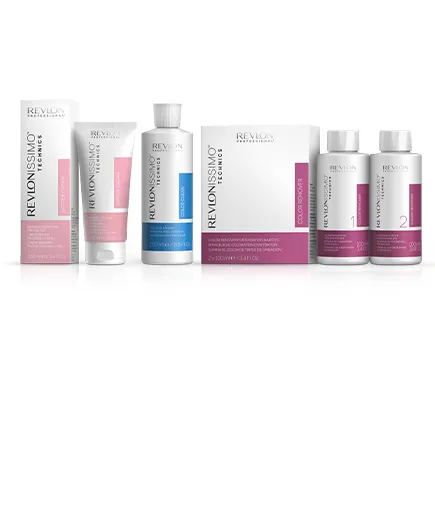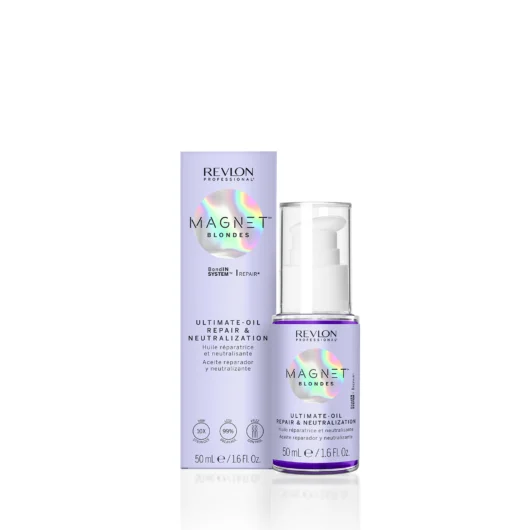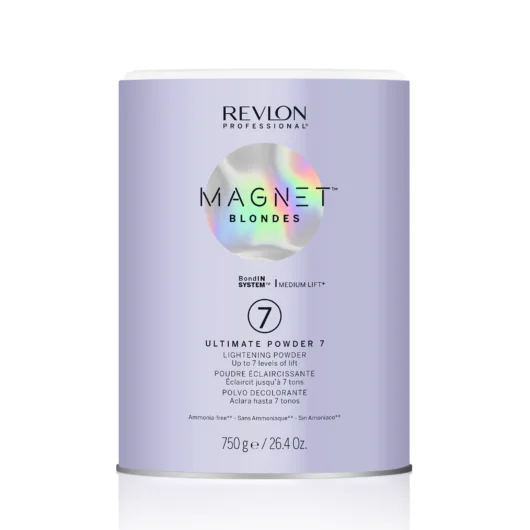Platinum Hair Mistakes: Lifting and Toning Fixes You Need to Know
Platinum hair is a bold, head-turning look, but its brilliance requires meticulous care and expert execution. Whether you’re an experienced stylist or a budding professional, mastering the art of creating and maintaining platinum hair is essential. Read on as we explore common mistakes and share pro tips to help you achieve the perfect platinum blonde.

Why Going Platinum Is a Complex Process
Achieving a stunning platinum blonde involves multiple technical steps, and it’s not just a one-time process. As regrowth comes in, natural hair often requires lifting through several levels to reach the pale yellow base necessary for platinum tones. This process is easier to manage if the client returns within a 5 to 6 week window and their hair is at a base level 7 or higher. However, timing between appointments can slip for various reasons, such as lifestyle, financial constraints, or simply not rebooking in time (stylists, try to get those appointments on the calendar before your clients leave!). If a client waits more than 8 weeks, regrowth can become more challenging to lift, increasing the risk of overlapping and resulting in banding.
High Risks of Damage
Before a platinum blonde service, It’s important to consider the hair’s starting condition, history, and realistic goals. Incorporating pre-treatments and bond-protecting technologies can dramatically reduce the potential for damage, especially on darker hair tones or previously processed strands.
View this post on Instagram
Common Lifting Mistakes and Their Fixes
When it comes to lifting hair to achieve the perfect platinum blonde, even experienced stylists can make common mistakes. Understanding these missteps and how to fix them is key to delivering great results every time.
Unexpected or Uneven Results
Before getting started, consider doing a test. Test strands help predict how hair will lift and identify potential damage risks. Patch tests ensure that clients don’t react negatively to bleaching or toning products. Conducting test strands gives you an idea of the hair’s lifting potential and highlights any risks of damage. Patch tests allow you to check that clients aren’t allergic to the products used during the process.
Uneven Lift
Causes: Uneven product application or inconsistent hair porosity.
- Sectioning techniques: Work in precise, manageable sections to ensure even saturation.
- Avoid applying too much or too little product, each strand should be coated evenly.
- Porosity equalizers: Use products such as Magnet™ Ultimate Pre-technical Equalizer to improve hair surface for a more even color. To use, apply the hair porosity equalizer to dry hair. Just a small amount should be applied to sensitized areas. Do not rinse.

Overlapping Lightener
Causes: Applying bleach to already-lightened hair during touch-ups.
- Protect previously treated areas by working in clean and precise sections and focus bleach on regrowth areas only. Use small brushes for precise application.
- Use a tailored product such as Magnet™ Blondes Ultimate Powder 7. Ammonia-free*. This is the medium lift step of the Magnet™ BondIN SYSTEM™ that creates and protects the hair’s internal bonds while offering a 360º protective shield against external aggressors.

Underprocessing or Overprocessing
Causes: Misjudging the timing or developer strength.
- Test strands: Check lifting speed and reaction before committing to full application.
- Developer selection: Match the developer’s strength to the hair’s starting level and desired lift. Check the manufacturer instructions for recommended development time and check a test strand before removing the color.
Toning Platinum Hair: Mistakes and Solutions
Analyze the underlying pigment and use the color chart and color wheel to identify the level and then neutralize unwanted tones. For example, violet neutralizes yellow, while blue neutralizes orange. Here are some additional tips:
- Follow the manufacturer’s timing guidelines and adjust for hair porosity.
- Learn how to color correct.
- Divide the hair into smaller sections and apply toner systematically.
- Use a tint brush for precision and an applicator bottle for speed in less porous areas.
View this post on Instagram
Protecting Hair During the Platinum Process
Protecting hair during the platinum process is crucial to maintaining its health and strength. By using the right techniques and products, you can get beautiful results without compromising the integrity of your client’s hair.
Using Bond-Building Products
For optimal results and hair integrity during platinum transformations, incorporate the Magnet™ line at every stage of the process. From pre-lightening preparations to post-care treatments, these advanced systems are crucial for minimizing damage. Bond-building solutions play a pivotal role in maintaining hair strength by reinforcing its internal structure, helping to prevent breakage even under the stress of chemical processes. They work to reinforce the internal structure of hair, thus reducing breakage and maintaining strength. Technology in hair care has advanced significantly, so embrace these innovations to deliver exceptional outcomes for platinum hair transformations.

Managing Heat During Processing
While heat can accelerate the lifting process, excessive heat can cause damage and in some circumstances should be completely avoided. It’s always important to check the manufacturer’s instructions and the hair’s integrity. Use low, controlled heat only when necessary, and monitor the hair closely during processing.
Post-Lightening Repair Treatments
Magnet™ Techics is the best choice after any color and technical services. The range is formulated with built in bonding ingredients that recover the hair’s inner structure during a technical service, to reduce mineral build up and metallic deposit. It even neutralizes the negative effects of poor water quality.
After lightening, restore the hair’s integrity with protein-rich treatments and cuticle-sealing products for a glossy finish. Deep-conditioning masks can help replenish moisture and improve hair elasticity. Restorative treatments, such as the Magnet™ Ultimate Post-Technical Treatment is specially formulated for chemically treated hair. It reinforces the internal structure of damaged and compromised hair after a technical service, which also helps lock in that new platinum blonde color. Products like the Magnet™ Blondes Ultimate Oil are also great for strengthening the hair fiber while detangling and sealing split ends.

Preventing Platinum Hair Mishaps
Preventing platinum hair mishaps requires careful planning and attention to detail at every stage of the process. By mastering key techniques, you can avoid common pitfalls and make sure your clients leave with a vibrant blonde platinum look.
Conducting a Thorough Consultation
Start with a detailed consultation. Use this to gain an understanding of your client’s hair history, assess the current condition, and set realistic expectations for achieving platinum hair. Be transparent about the time, effort, and maintenance platinum hair requires, and set realistic goals for multi-session processes if necessary.
View this post on Instagram
Maintaining Salon Standards
Regular professional development is essential for staying informed about evolving lightening and toning techniques while keeping up with industry trends. Ongoing education gives you consistent, high-quality results that align with current demands and minimizes the risk of errors. By keeping up-to-date on advanced methods and new product innovations, professionals can refine their skills, deliver on-trend services, and maintain the highest standards of quality. Investing in continuous training not only improves your technical expertise but also fosters confidence to approach every platinum transformation with precision and creativity.
Educating Clients on Platinum Hair Maintenance
Recommend sulfate-free shampoos and the right care and styling products, such as our EKSPERIENCE™ Color Protection Line, to help prolong color vibrancy and prevent fading. Inform clients about the risks of hard water and chlorine exposure, which can dull platinum tones.
Minimizing Heat Damage
Heat styling can exacerbate damage in bleached hair. Recommend heat protectants such as RE/START COLOR Balayage Care Cream before styling and advise against frequent high-heat tool use. Encourage air-drying or low-heat alternatives to maintain hair health.

Scheduling Regular Salon Visits
Encourage clients to book appointments every 4 to 6 weeks for a full platinum head, or every 8 to 12 weeks, depending on their needs, to help maintain their platinum look. Our toners like Color Excel—the new generation of professional, ultra-performing, caring tone-on-tone color—feature the GLOWin SYSTEM™. This technology refills and repairs the protein structure, primes hair for optimal color deposit, and seals the cuticle to lock in color retention and lasting glow, while neutralizing and adding the perfect platinum tone. Clients can also refresh their color at home with Nutri Color™ Filters Metal-Ice Toning Filters. These semi-permanent, metal-ice toning filters are perfect for maintaining or refreshing icy, shimmering, ultra-luminous effects.
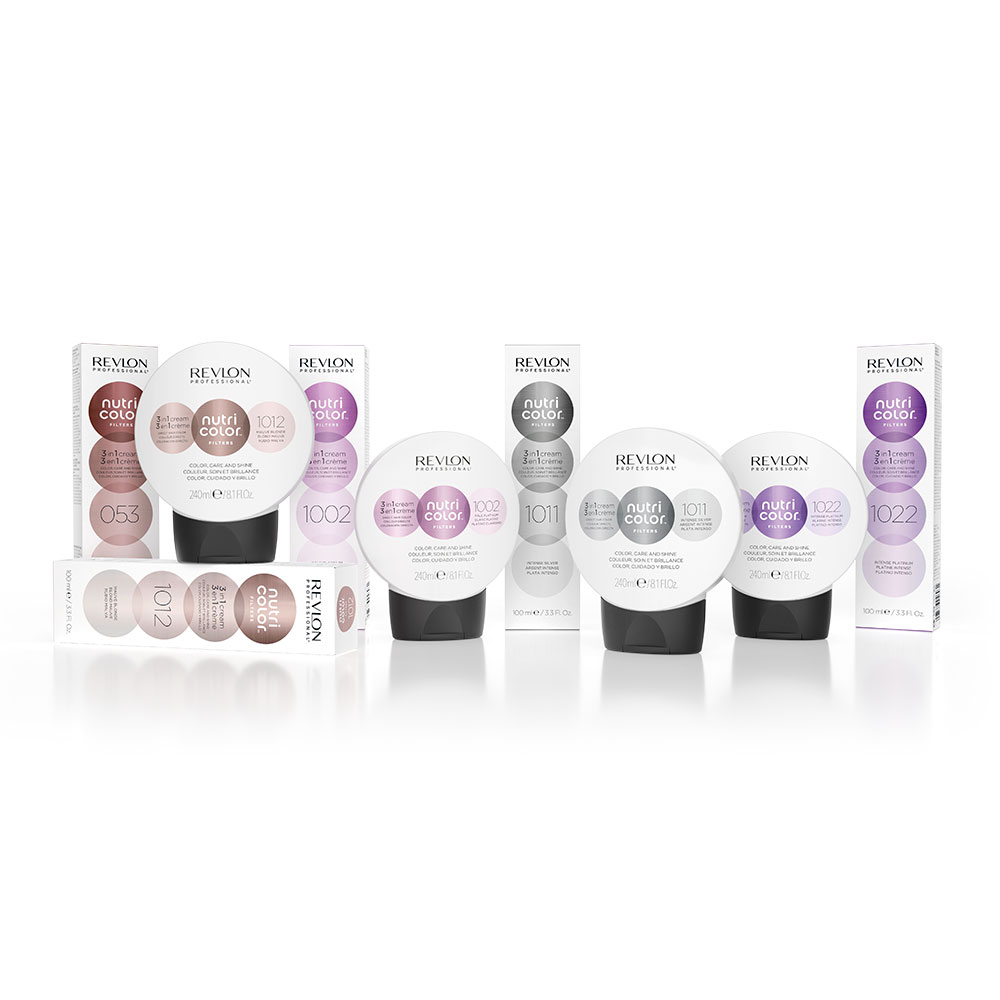
Platinum hair is an art that requires skill, patience, and the right techniques, so make sure you carry on upskilling by visiting our 24/7 educational platform Revlon Pro AlwaysOn (available for clients only, so click the link to become one).
To get all the products you need, go to Revlon ProShop, and for more color advice, check out our Revlon Pro Color World Mobile App, which offers professional color tools and handy color charts.








